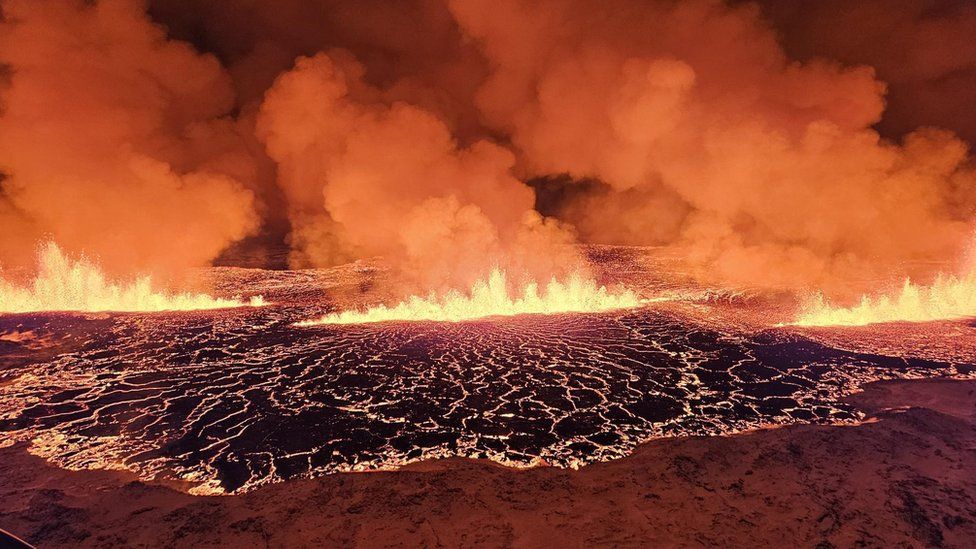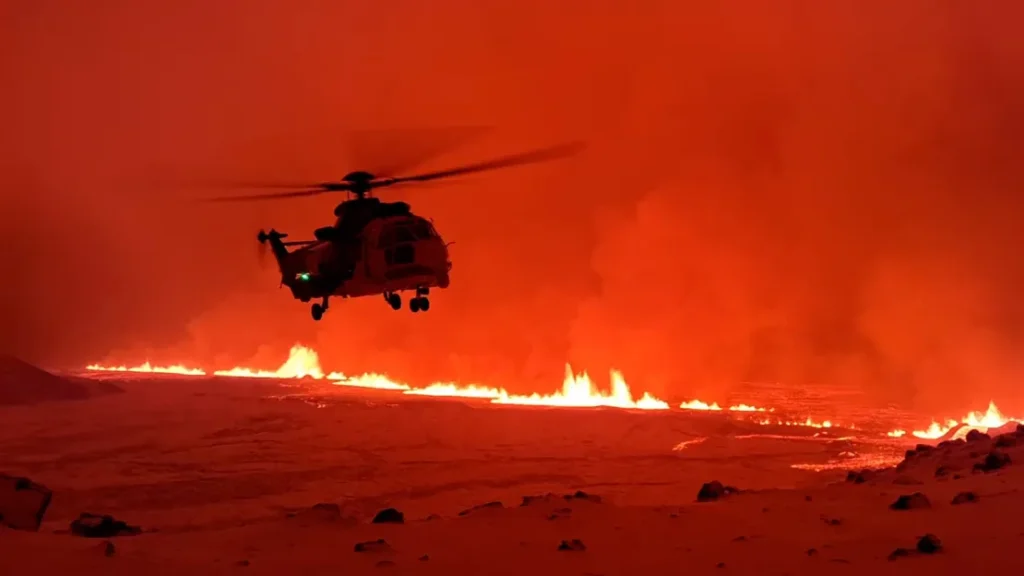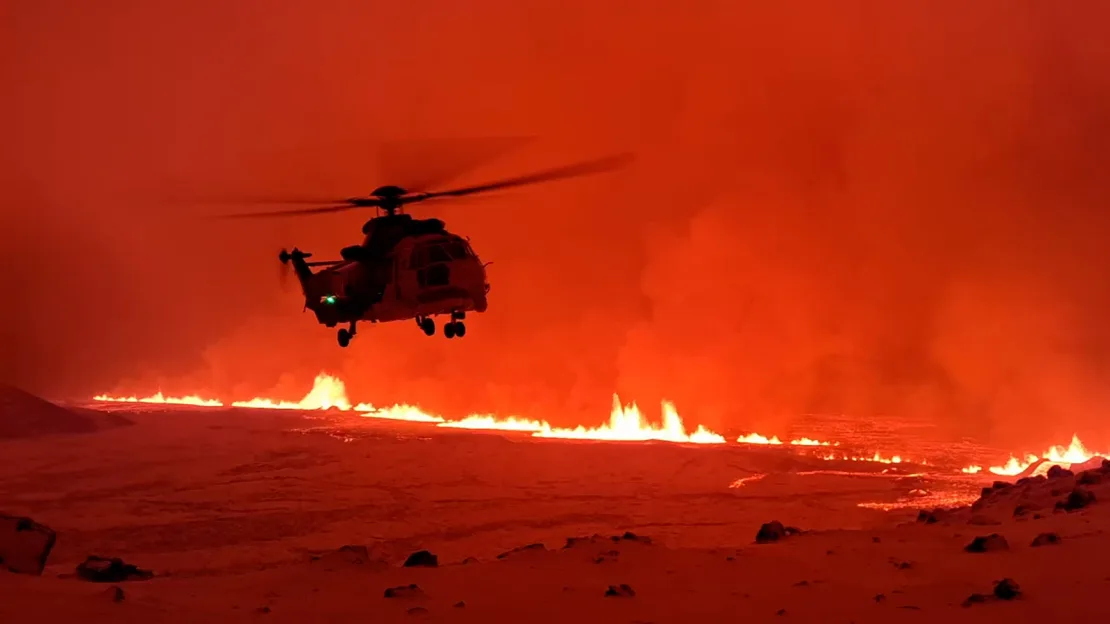Introduction:
In a stunning turn of events, a volcano on Iceland’s Reykjanes Peninsula erupted on Monday, painting the night sky with bursts of lava and smoke. The eruption, following weeks of seismic activity, led to the evacuation of a nearby town. This captivating natural phenomenon not only showcases the raw power of nature but also raises questions about the resilience of communities in the face of such events.

The Spectacle Unfolds:
The eruption, which began around 10 p.m. local time, was preceded by an earthquake an hour earlier, as reported by the Icelandic Meteorological Office. The eruption site, close to Hagafell, approximately 3 kilometers north of Grindavík, saw spectacular displays of lava and smoke, creating a mesmerizing yet potentially perilous scene.
Evacuation Preceding the Eruption:
Last month, Grindavík and surrounding settlements faced an evacuation order due to the looming threat of a volcanic eruption. The town, home to over 3,000 residents and situated just 7 kilometers from the renowned Blue Lagoon geothermal spa, cleared out amid concerns of flowing lava. The evacuation order proved prescient, as the recent eruption unfolded in close proximity to the town.
The Government’s Response:
Iceland’s government released a statement indicating that the fissure opening from the eruption spans almost 4 kilometers, marking the fourth eruption in the area since 2021 and the largest thus far. While the eruption itself is not deemed a threat to life, the release of “considerable” toxic gases raises concerns for public safety. The government has closed the area to all traffic, cautioning against approaching the vicinity.
Impact on Flights and Infrastructure:
Despite the eruption’s intensity, there are currently no disruptions to flights to and from Iceland, with international flight corridors remaining open. The eruption, classified as a fissure eruption, is not expected to result in large explosions or significant ash production, reducing the likelihood of widespread disruptions akin to the Eyjafjallajökull volcano eruption in 2010.
Tourist Board Warnings:
The Icelandic Tourist Board has strongly advised against visiting the eruption site due to the release of toxic gases. Responders and scientists are assessing the situation, emphasizing the potential risks associated with the volcanic activity. This caution comes as a temporary closure of the Blue Lagoon, a popular tourist destination, was announced in response to the eruption.
Iceland’s Volcanic Landscape:
Iceland, positioned on a tectonic plate boundary, is home to 32 active volcanoes. The country has a history of volcanic eruptions, often occurring in uninhabited areas. The recent eruption follows a trend set by the Fagradalsfjall volcanic system in 2021, which, despite not posing a threat to populated areas, became a tourist attraction.

Conclusion:
As the Reykjanes Peninsula experiences the awe-inspiring eruption, it serves as a reminder of the dynamic forces shaping our planet. The resilience of communities, the coordination of government responses, and the precautionary measures in place highlight the delicate balance between human existence and the unpredictable yet breathtaking displays of nature.
FAQs:
Q: Is the eruption in Iceland expected to impact flights?
A: No, there are currently no disruptions to flights to and from Iceland, and international flight corridors remain open.
Q: What precautions are in place for the public’s safety during the eruption?
A: The area surrounding the eruption is closed to all traffic, and the government strongly advises against approaching the site due to the release of toxic gases.
Q: How does this eruption compare to previous ones in Iceland?
A: This marks the fourth eruption in the Reykjanes Peninsula since 2021 and is the largest so far, with a fissure opening almost 4 kilometers long.
Q: What is the history of volcanic eruptions in Iceland?
A: Iceland, situated on a tectonic plate boundary, is home to 32 active volcanoes, and eruptions are not uncommon. The recent eruption follows a trend set by the Fagradalsfjall volcanic system in 2021.
Q: How has the government responded to the eruption?
A: The Icelandic government has closed the area to all traffic, assured the public that the eruption does not pose a threat to life, and emphasized the release of toxic gases as a concern for public safety.
